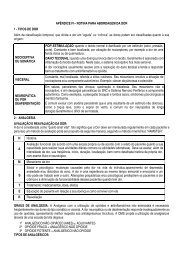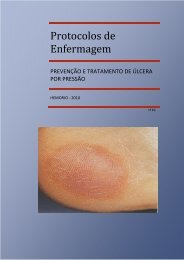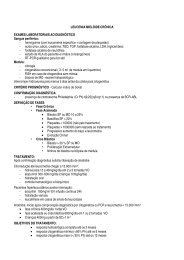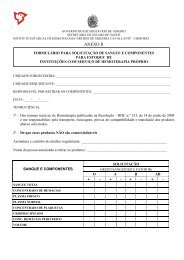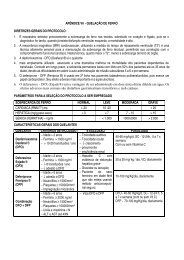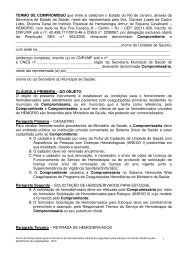Protocols - Hemorio
Protocols - Hemorio
Protocols - Hemorio
You also want an ePaper? Increase the reach of your titles
YUMPU automatically turns print PDFs into web optimized ePapers that Google loves.
- Lumbar puncture (suspicion of HSA with normal CT)<br />
- Cervical column x-ray (In the suspicion of cervical or cranial trauma, height fall, pain or cervical rigidity).<br />
- Young subjects: rheumatologic screening and thyroidal function<br />
- On special cases: C and S protein level, antithrombins III, Leiden factors VII, VIII and V, Tissue<br />
plasminogen activator (TPA) and plasminogen activator inhibitor PAI, homocistein, prothrombin<br />
mutationanticardiolipine (IgG and IgM) and lupus anticoagulant.<br />
CLASSIFICATION OF STROKE:<br />
ORIGIN:<br />
- ISCHEMIC<br />
- HEMORRAGIC<br />
EPISODE DURATION:<br />
- TIA –Transitory ischemic attack – neurologic deficit up to 24 h, without sequels.<br />
- “in crescendo” TIA – two or more TIA episodes in 24 hours (it is one of the most important<br />
neurological emergency).<br />
- RIND – Reversible Ischemic Neurological Deficit – lasts more than 24 h, with delayed deficit<br />
reversibility. More detailed exams show minimal sequels<br />
- “ONGOING STROKE”: signals and symptoms aggravated<br />
- COMPLETE CEREBRAL INFARCTION<br />
STROKE – THERAPEUTIC APPROACH:<br />
1 – Maintain free and functioning the respiratory airways<br />
2 –ECG and oximetry monitoring: evaluate O 2 suplementation<br />
3 – Maintain elevated thorax and head at 30 o<br />
4 – Research cranial or cervical trauma and cardiovascular changes<br />
5 –Neurological Exam: Conscience Level, convulsive episodes, Glasgow Coma Score, pupils (symmetry,<br />
reactivity) and four limbs movement.<br />
6 - Hydration<br />
6 - If PA is above 220 / 110 mmHg, it should not be acutely reduced<br />
7 – Looking for reversible causes (bad positioning, pain, hypoxia) If there is arterial hypotension: volemic<br />
reposition, vasoactive amines.<br />
8 – Cardiac monitoring<br />
SUMMARY DESCRIPTION OF NEUROLOGIC EXAM<br />
Dimidiate motor deficit Hemiparesis or hemiplegia or unilateral central facial paresia<br />
Sensitivity Deficit Reduction or loss of painful or tactile sensitivity<br />
21



